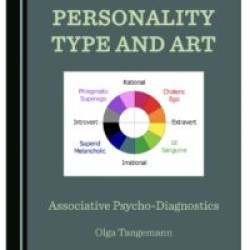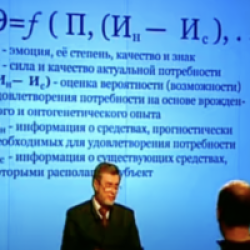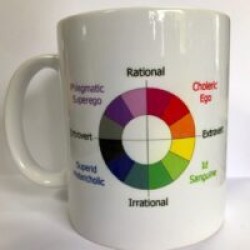This is an introduction to understaning the structure of socionics Model A from the perspective of Associative Socionics and Butterfly model. The presentation differ from the original one but does not change the concept of the model A (author -A. Augustinavichiute). In fact, the presentation I offer is closer to the concept of C. Jung and 4 mental functions as you can see that 8 socionics functions are presented as channels of Jungian fucntions ( thinking, feeling, sensing and intuition). It is also much easer to grasp, remember and draw.
The 8 functions are divided by 2 dichotomies introversion – extraversion and rationality– irrationality (judgement -perception) in 4 pairs of functions: Ego (Fe,Te) ; Id (Se, Ne), Superego (Fi, Ti); Superid (Ni, Si).
Each pair of functions define the TPE group: Ego-, Id- types, Superego-types and Superid-types. The concept of TPE refers to the personality concepts of S. Freud, C. Jung and the psychic energy. By TPE is meant the the type of psychic energy, which is the differentiating factor for the types and their preferences in music, art and more. For example, Ego – music, Superego – art and etc.
What have different TPE groups in common?
Superego& Ego are rational. Superid & Id are irrational.
Superego& Superid are introverts. Ego& Id are extroverts.
Ego & Superid are dynamic. Superego& Id are static.
Picture 1. Associative Butterfly model of human psyche.
Each TPE combines the 2 pairs of functions which are associated with the colour of the rainbow.
TPE Ego is extroverted, rational, dynamic. Egofunctions are Fe (feeling-ethics, red) and Te (thinking-logics, orange).
TPE Superid is introverted, irrational, dynamic. Superidfunctions are Ni (intuition, green-blue) and Si (sensing, dark-blue).
TPE Id is extroverted, irrational, static. Id functions are Se (sensing, yellow) and Ne (intuition,green).
TPE Superego -functions – introverted, rational, static. Superegofunctions are Ti (-thinking-logics, violet) and Fi (feeling – ethics, purple/pink).
Butterfly model is a general model for the differentiation of the types at the level of TPE groups based on the 3 basic dychotomies: extroversion- introversion, rationality –irrationality and statics- dynamics.
Models A for each of the 16 types
In the model A functions are groupedtogether by the static – dynamic dichotomy into two blocks “mental” (conscious) and “vital” (subconscious). Each block consists of 4 functions either static or dynamic:
Static functions – Fe, Ti, Se, Ne
Dynamic functions – Fe, Te, Si, Ni,
If you learn how to draw the mental part of the model A, you will easily draw the vital part because the parts are symmetrical. Alternatively use black and white symbols for functions instead of MBTI abbreviations which you can find on the picture of the Butterfly model.
The mental blocks of the model A for 4 Ego-types look like that:
1. Program – Feor Feor Te orTe
2.Creative – Ni Si Ni Si
3. Vulnerable – Si Ni Si Ni
4. Role – Te Te Fe Fe
The mental blocks of the model A for 4 Superid – types look like that:
1. Program – Si or Si or Ni or Ni
2. Creative – Te Fe Te Fe3. Vulnerable – Fe Te Fe Te
4. Role – Ni Ni Si Si
The mental blocks of the model A for 4 Superego – types look like that:
1. Program – Ti or Ti or Fi or Fi
2. Creative – Se Ne Se Ne
3. Vulnerable – Ne Se Ne Se
4. Role – Fi Fi Ti Ti
The mental blocks of the model A for 4 Id –types look like that:
1. Program – Neor Neor Se or Se
2.Creative – Ti Fi Ti Fi
3. Vulnerable – Fi Ti Fi Ti
4. Role – Se Se Ne Ne
How to read the name of the type from the model A structure?
Note that Model A provides the justification for the type names. The socionic name is leading-creative-extra/introversion. For example the ILE is intuitive leading with a logical creative function and is extroverted. The ESI has leading ethics with secondary sensing and is introverted.
Interesting facts: The types in socionics are associated with celebrities and famous literature heroes from the past to make it easier for you to memorise and use the typology. Plus each types has a role-name (e.g. the guardian, the artisan and etc.). – similar to MBTI.
Nature of functional positions – (from Wikipedia):
“Leading, program, primary, base, or dominant function. This is the strongest conscious function, and the most utilized function of the psyche. A person’s outlook and role in life is largely determined by the nature of this function. One is generally very confident in the use of this function, and may defend it when challenged. According to Bukalov, this is 4D function (Ex, No, Si, Ti).
Creative or secondary function, is second in influence only to the dominant function. It assists the dominant function in achieving its essence. One is generally less confident with the use of this function than with his dominant function. As a result, the creative function is sometimes less instrumental when a person is challenged or threatened, or when dealing with new and complex tasks and data. According to Bukalov, this function is 3D (Ex, No, Si), or time invariant, because it produces something new which may never exist before.
Vulnerable function, or place of least resistance, is a weak and conscious function, in addition to being the weakest function of the psyche. One painfully perceives his complete inability to use this function, and reacts negatively to its imposition upon him. Tactful assistance is required from someone else’s strong function (preferably the Function to overcome the problems associated with this function. According to Bukalov, this function is single dimensional, i.e. only personal experience is collected here, and it cannot be adapted even to the social norms.
Role function, is a weak but conscious function. One generally tries to be at least adequate in areas where use of the role function is necessary. Moreover, one generally uses it in situations of social adaptation (e.g. introducing themselves to an unknown person). However, generally one has very little control or confidence over the role function, and criticism is painfully acknowledged with respect to it. Tactful assistance is required from someone else’s strong function to overcome the problems associated with the role function. According to Bukalov, this function is 2D (Ex, No), or situation invariant, because it cannot adapt to the unusual situation beyond social norms.
Suggestive function, is a weak and unconscious function which is largely lacked. One requires assistance from somebody confident in this function in order to overcome the difficulties it presents. When left to ones own devices, the suggestive function goes unnoticed. According to Bukalov, this function is single dimensional, too, and one must be careful not to become subject of manipulation because of misuse of this function. Discussing aspects of this function makes person happy and trustful. (That’s why it’s called suggestive.)
Mobilizing function. This is a weak and unconscious function which one often understands poorly. Nonetheless, this function has a strong influence over one’s actions. Individuals requires assistance from someone who uses it confidently in order to understand it. Often an individual is only aware that they are totally unaware of how to use this function. At the same time, it’s 2D function, so it’s capable of collecting a number of easy receipts for daily needs.
Demonstrative or background function. This function is so deeply rooted into the psyche that one is usually not consciously aware of its existence or utilization. It is as strong as the leading function (4D according to Bukalov) and it tends to act silently to protect the weakest point of the dual person (see below). It can sound in situations of extreme irritation when the restricting function fails to break the unsolicited influence.
Observant or ignoring, or restricting function, the function of personal knowledge. This is a strong (3D according to Bukalov) but unconscious function. One generally has a good grasp of this function, but attempts to limit its use considerably. Individuals will disregard this function when an argument calls for restraint or when it will be difficult to indulge in its essence. At the same time one uses this function to restrict somebody’s intervention to their privacy or territory, or other unsolicited interaction”.
Ego-types are rational, dynamic extroverts.
They have Ego functions Fe & Te as a role and program function.
Ego-functions are associated with red, orange, crimson colours.
Hamlet – EIE – ENFJ Victor Hugo -ESE- ESFJ
The Performer The Enthusiast
The ethical intuitive extravert The ethical sensing extravert
Program – Fe Fi – Restricting Program – Fe Fi – Restricting
Creative- Ni Ne – Background Creative- Si Se – Background
Vulnerable – Si Se – Mobilizing Vulnerable – Ni Ne – Mobilizing
Role – Te Ti – Suggestive Role – TeTi – Suggestive
Jack London – LIE – ENTJ Max Otto von Stierlitz -LSE – ESTJ
The Entrepreneur The Administrator
The logical intuitive extravert The logical sensing extravert
Program – Te – Ti – Restricting Program – Te Ti – Restricting
Creative- Ni Ne – Background Creative- Si Se – Background
Vulnerable -Si Se – Mobilizing Vulnerable – Ni Ne – Mobilizing
Role – Fe Fi – Suggestive Role – Fe Fi- Suggestive
Superid-types are irrational, dynamic introverts. Superid functions are Si ++ Ni.
Superid associated with dark colours, blue and black.
Jean Gabin – SLI – ISTP Honoré de Balzac – ILI – INTP
The Artisan The Critic
The sensing logical introvert The intuitive logical introvert
Program – Si Se – Restricting Program – Ni Ne – Restricting
Creative- Te Ti- Background Creative- Te Ti- Background
Vulnerable – Fe Fi – Mobilizing Vulnerable – FeFi – Mobilizing
Role – Ni Ne – Suggestive Role – Si Se – Suggestive
Alexandre Dumas– SEI – ISFP Sergei Yesenin – IEI – INFP
The Hedonist The Dreamer
The sensing ethical introvert The intuitive ethical introvert
Program – Si Se- Restricting Program – Ni Ne – Restricting
Creative- Fe Fi – Background Creative- Fe Fi – Background
Vulnerable -Te Ti- Mobilizing Vulnerable -Te Ti -Mobilizing
Role – Ni Ne – Suggestive Role – Si Se – Suggestive
Id-types are irrational, static extraverts. Id functions are Ne + Se. Id is associated with green and yellow colours.
Aldous Huxley – IEE – ENFP Napoleon Bonaparte – SEE- ESFP
The Mentor The Ambassador
The intuitive ethical extravert The sensing ethical extravert
Program – Ne Ni – Restricting Program – Se Si – Restricting
Creative- Fi Fe – Background Creative- Fi Fe – Background
Vulnerable -Ti Te – Mobilizing Vulnerable – Ti Te – Mobilizing
Role – Se Si – Suggestive Role – Ne Ni – Suggestive
Don Quixote -ILE- ENTP Georgy Zhukov – SLE – ESTP
The Innovator The Marshall
The intuitive logical extravert The sensing logical extravert
Program – Ne Ni – Restricting Program – Se Si – Restricting
Creative- Ti Te – Background Creative- Ti Te – Background
Vulnerable – Fi Fe – Mobilizing Vulnerable – Fi Fe – Mobilizing
Role – Se Si – Suggestive Role – Ne Ni – Suggestive
Superego – types are rational, static introverts. Superego functions are Ti and Fi. TPE Superego is associated with
light, pastel colours and also pink, purple, violet and white colours.
Fyodor Dostoyevsky – EII – INFJ Theodore Dreiser – ESI – ISFJ
The Humanist The Guardian
The ethical intuitive introvert The ethical sensing introvert
Program – Fi Fe – Restricting Program – Fi Fe – Restricting
Creative- Ne Ni – Background Creative- Se Si – Background
Vulnerable – Se Si – Mobilizing Vulnerable – Ne Ni – Mobilizing
Role – Ti Te – Suggestive Role – Ti Te – Suggestive
Maximilien Robespierre – LII – INTJ Maxim Gorky – LSI – ISTJ
The Analyst The Inspector
The logical intuitive introvert The logical sensing introvert
Program – Ti Te- Restricting Program – Ti Te – Restricting
Creative- Ne Ni- Background Creative- Se Si – Background
Vulnerable – Se Si- Mobilizing Vulnerable – Ne Ni- Mobilizing
Role – Fi Fe – Suggestive Role – Fi Fe – Suggestive
Olga Tangemann 2013 © Associative Socionics









